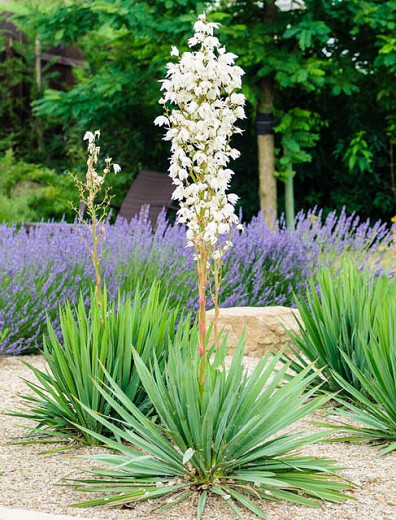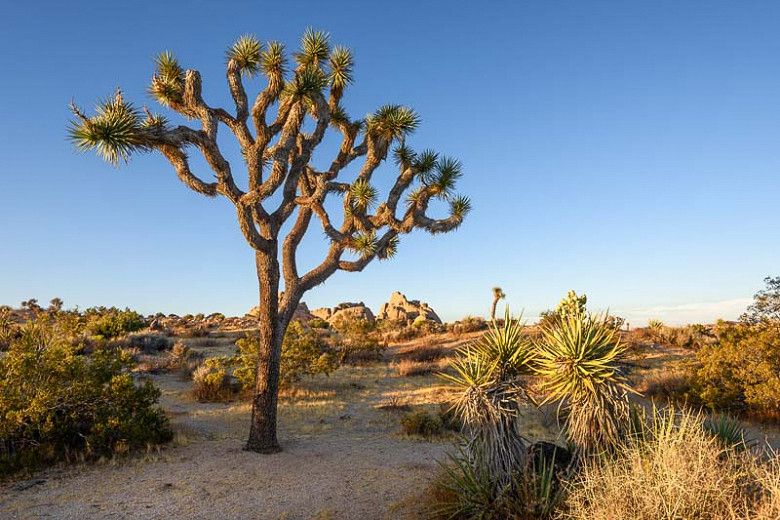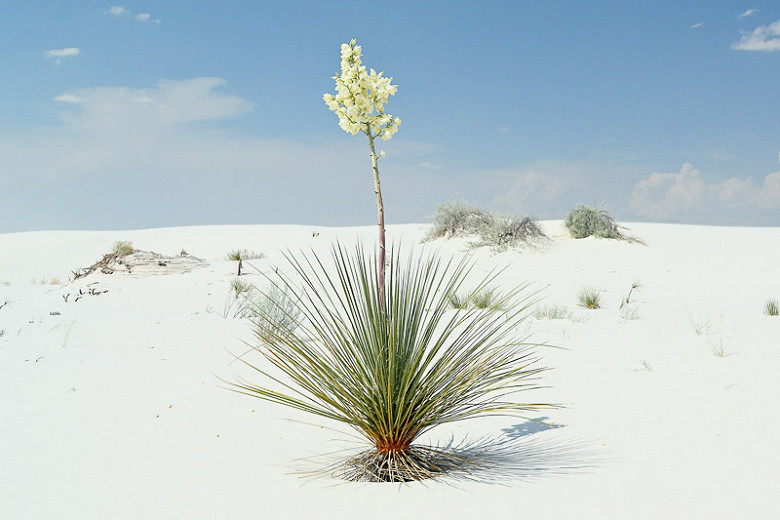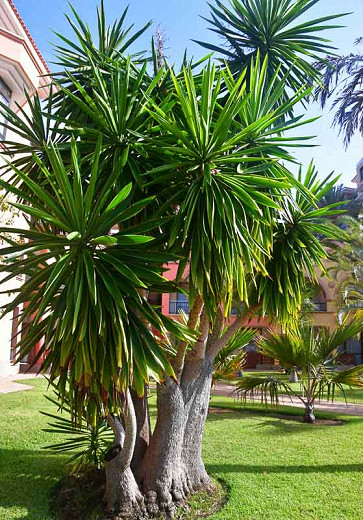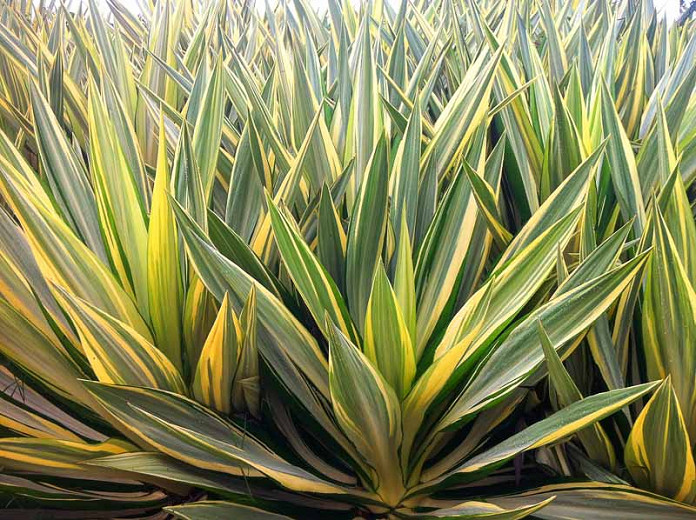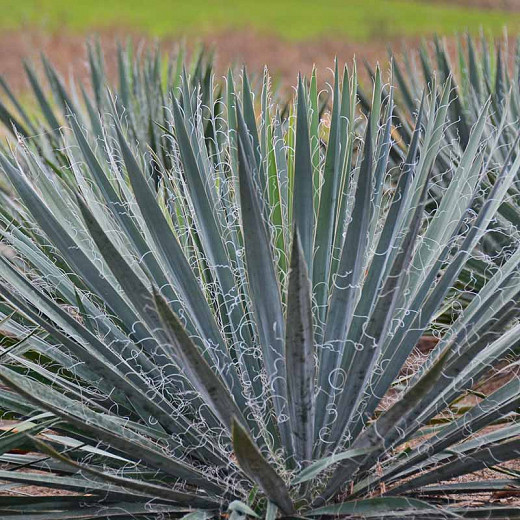Yucca filamentosa (Adams Needle)
Native to the southeastern United States, Yucca filamentosa (Adam’s Needle) is a very ornamental, broadleaf evergreen shrub featuring a basal rosette of rigid, sword-shaped, spine-tipped, deep green leaves edged with curly filaments. They are topped in early to midsummer with a dramatic flowering stalk
Native to the southeastern United States, Yucca filamentosa (Adam's Needle) is a very ornamental, broadleaf evergreen shrub featuring a basal rosette of rigid, sword-shaped, spine-tipped, deep green leaves edged with curly filaments. They are topped in early to midsummer with a dramatic flowering stalk reaching 5-8 ft. (150-240 cm) and bearing panicles of nodding bell-shaped creamy white flowers, about 2.5 in. long (6 cm). Foliage may also be variegated, adding a bright note to the garden year-round.
- Leaves form a foliage clump to 2-3 ft. tall and wide (60-90 cm).
- Winner of the 2012 Cary Award, which recognizes plants that are particularly adequate for New England, offer superior landscape appeal, are winter hardy in zone 5 or colder and are pest resistant.
- Easily grown in light, dry to medium moisture, well-drained soils in full sun. Tolerates poor, sandy soils and even a few hours of shade. Drought and salt tolerant.
- Great for beds and borders, city gardens, coastal gardens, rock gardens or Mediterranean gardens.
- Virtually pest and disease free, but watch for aphids or potential leaf spot. Attracts moths and hummingbirds, but this plant is deer and rabbit resistant
- Propagate by seed or remove rooted suckers
- Remove spent flowering stems.
- Toxic to dogs, toxic to cats, toxic to horses.
- Yucca filamentosa is native to southeastern North America.
- Main Yucca filamentosa cultivars are:
'Color Guard' – with a brilliant yellow center to the sword-like leaves which are tinged with pink and rose during the winter months.
'Gold Sword' – similar to ColorGuard but with streaks of gold and green at the center of the leaves
'Gold Edge' – rimmed with creamy yellow.
Requirements
| Hardiness | 4 – 11 |
|---|---|
| Heat Zones | 5 – 11 |
| Climate Zones | 1, 1A, 1B, 2, 2A, 2B, 3, 3A, 3B, 4, 5, 6, 7, 8, 9, 10, 11, 12, 13, 14, 15, 16, 17, 18, 19, 20, 21, 22, 23, 24 |
| Plant Type | Cactus – Succulents, Shrubs |
| Plant Family | Yucca |
| Exposure | Full Sun |
| Season of Interest | Spring (Early,Mid,Late)Summer (Early,Mid,Late)FallWinter |
| Height | 3' – 8' (90cm – 240cm) |
| Spread | 2' – 3' (60cm – 90cm) |
| Spacing | 24″ – 36″ (60cm – 90cm) |
| Water Needs | Low |
| Maintenance | Low |
| Soil Type | Chalk, Loam, Sand |
| Soil pH | Acid, Alkaline, Neutral |
| Soil Drainage | Well-Drained |
| Characteristics | Plant of Merit, Showy, Evergreen |
| Native Plants | United States, Midwest, Illinois, Indiana, Kansas, Michigan, Missouri, Nebraska, Ohio, Wisconsin, Northeast, Connecticut, Delaware, Massachusetts, Maryland, New Jersey, New York, Pennsylvania, Rhode Island, Southeast, Alabama, Arkansas, Florida, Georgia, Kentucky, Louisiana, Mississippi, North Carolina, South Carolina, Tennessee, Virginia, West Virginia, Southwest, Texas |
| Tolerance | Deer, Drought, Rabbit, Dry Soil, Rocky Soil, Salt |
| Attracts | Hummingbirds |
| Garden Uses | Beds and Borders |
| Garden Styles | City and Courtyard, Coastal Garden, Gravel and Rock Garden, Mediterranean Garden |
